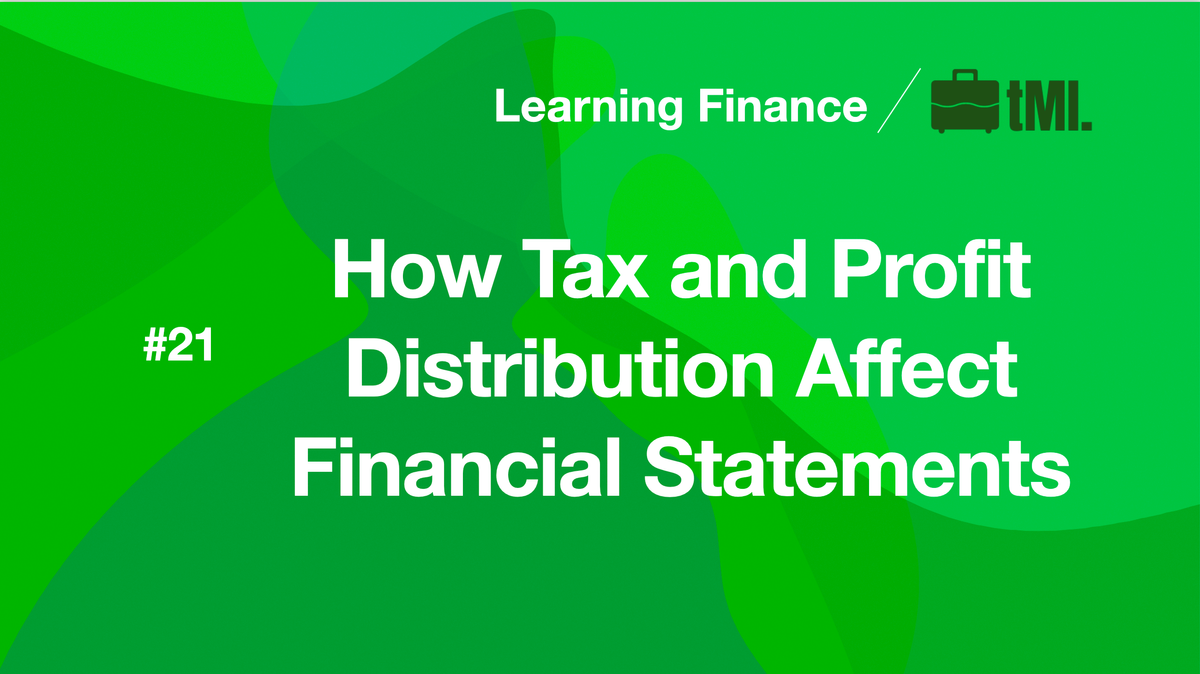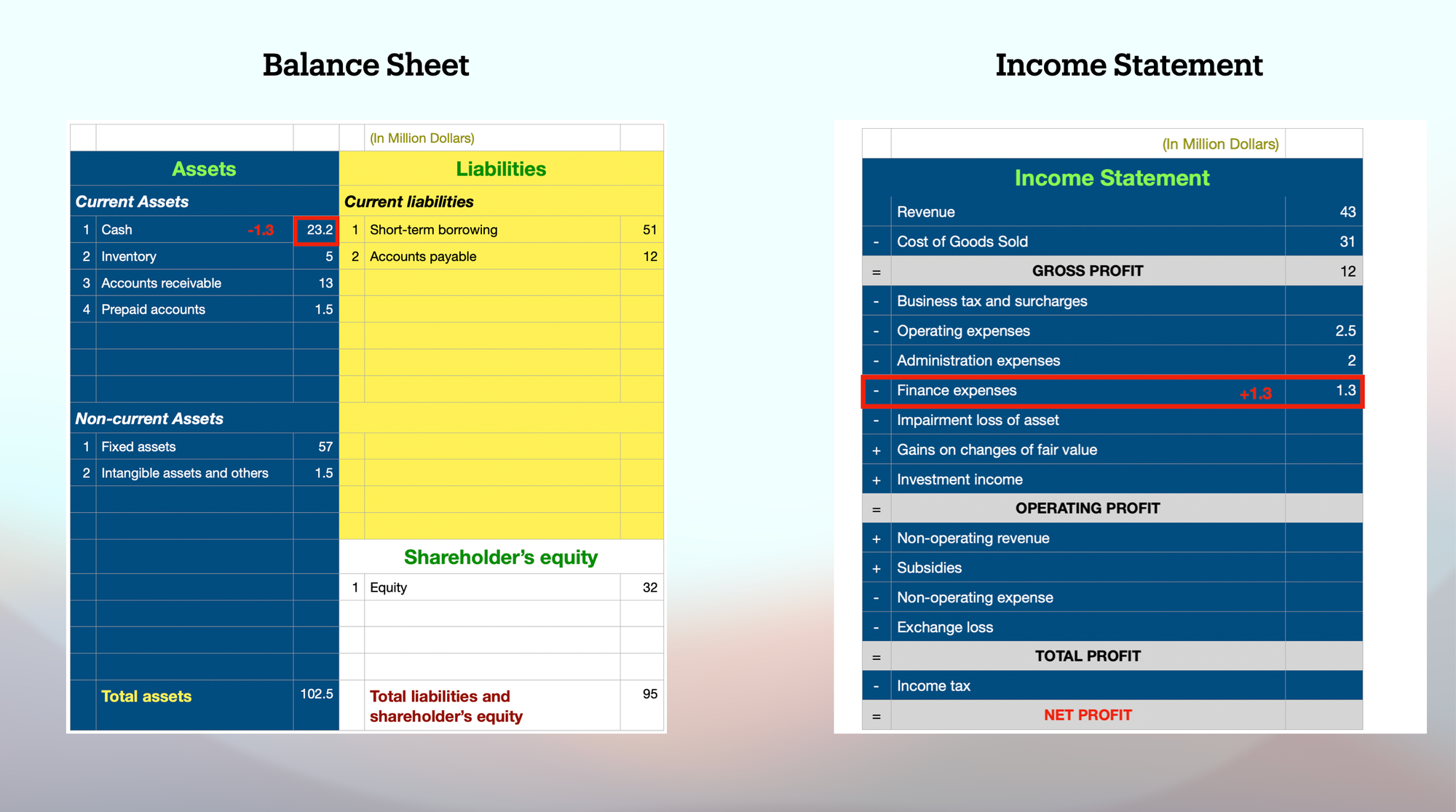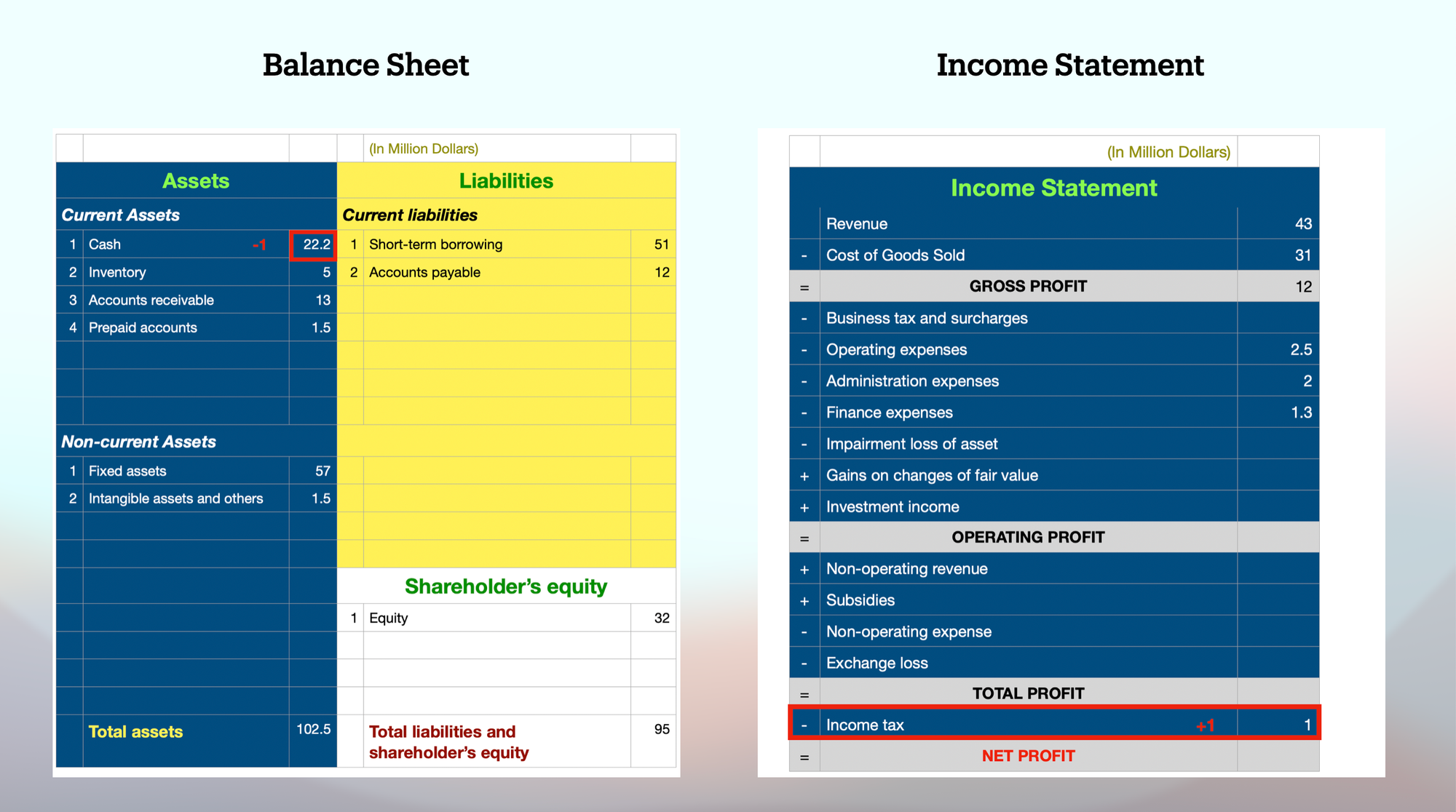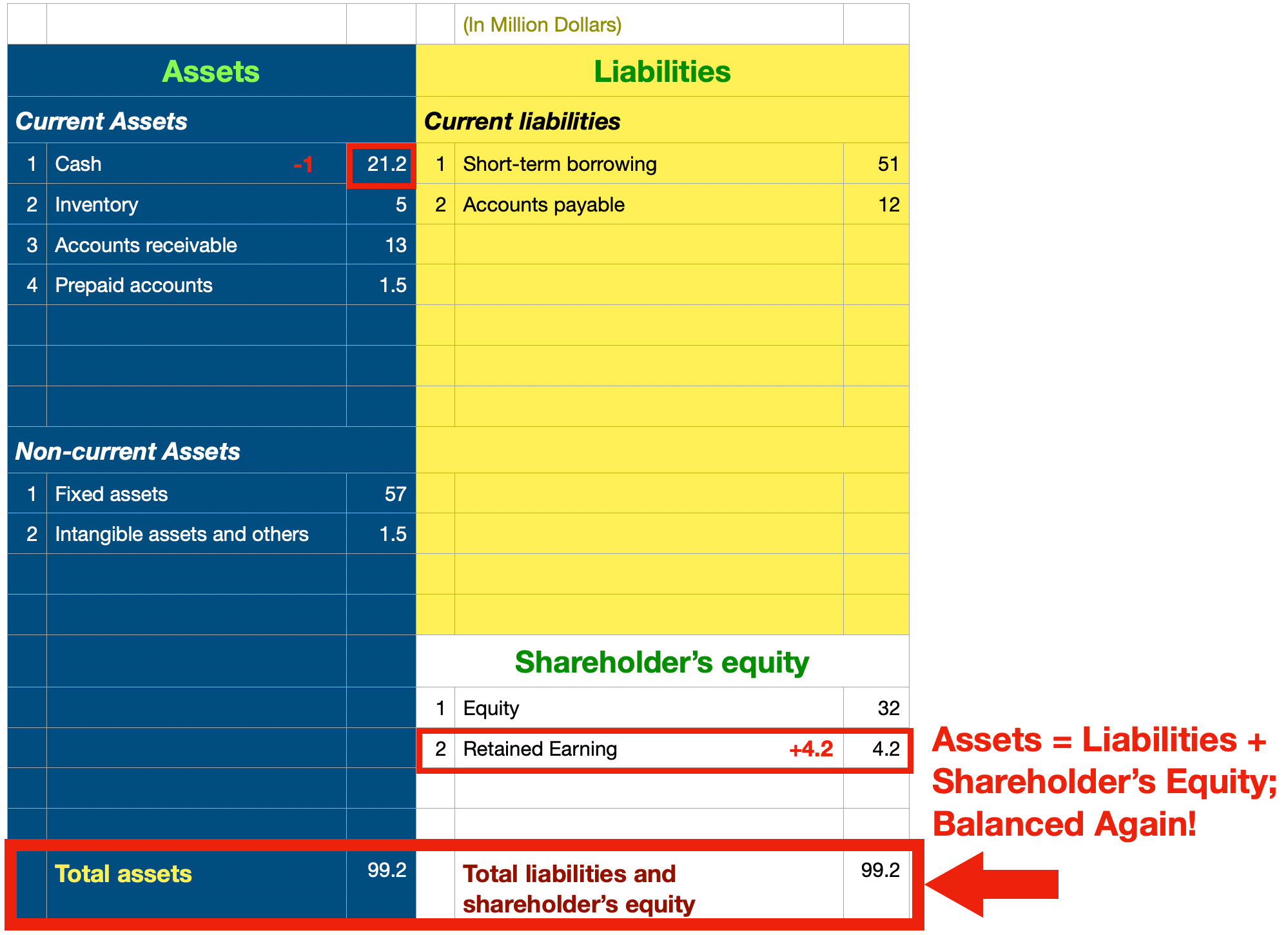How Tax and Profit Distribution Affect Financial Statements
After paying all the expenses and taxes, we've managed to get some profit. How does profit distribution affect balance sheet and income statement?

Now that our company has been established, raw materials and fixed assets procured, first sales made, and our company also invested in R&D and procured raw materials for the next year, let's look at how taxes and profit distribution affect the company's financial statements.
Because we borrowed money from the bank, we now owe the bank 1.3 million dollars of interest expenses in the first year. At the end of the first year, the money is due and we will pay out this amount from our bank account. As a result of this, our cash position is reduced by 1.3 million dollars on the balance sheet, and we also need to record the same amount under financial expenses on the income statement.

Next, our company accrued 1 million dollars of income tax from our first year's operations.
Once again, we will need to pay out 1 million dollars from the bank account, so our cash is reduced by this amount. On the income statement, there is a place called income tax and that's where we put the 1 million dollars in.

Now that we have all the costs and expenses recorded, what is our net profit from this year's operations?
We can get the number by subtracting all the costs and expenses from our revenue, and we come up with 5.2 million dollars - our first year's net proft.
As a shareholder of the company, we have the option to withdraw this money from the company. Let's assume that instead, we've decided to withdraw only 1 million dollars from the company and keep 4.2 million dollars in the company. The 1 million is called cash dividend. The 4.2 million dollars, if you recall, is actually treated as reinvestment into the company by the shareholders, called Retained Earnings.
The total of 4.2 million dollars actually belong to the shareholders, but instead, they choose to put the money back into the company, making this money retained earnings.
Our cash position further decreases by 1 million dollars after we decide to distribute this amount as cash dividends to shareholders. We then put 4.2 million dollars in retained earnings under Shareholder's Equity. This economic activity does NOT affect income statement, since it stops once the net profit is arrived at.

So far all economic activities occurred to our fictional company are reflected on our statements one by one. That is to say the statements presented before us are the balance sheet and income statement of the Company. Let's have a look at the statements.
Income Statement
From the income statement we can see that our company made 43 million dollars in the first year, and spent 31 million dollars on costs of those goods sold. The Gross Profit of making the sales is 12 million dollars.
Next, our company incurred 2.5 million dollars of operating expenses, 2 million dollars of administrative expenses, and 1.3 million dollars of financial expenses in the form of interests. We didn't suffer any impairment loss of asset, and made no investment income. The Operating Profit of the company is 6.2 million dollars. Without non-operating incomes and expenses and subsidy income, the Total Profit is also 6.2 million dollars.
With the deduction of one million dollar income taxes, the Net Profit of 5.2 million dollars.
In summary, our company made 43 million dollars in revenue, which resulted in 5.2 million dollars in net profit in the first year. That is more than 10% net profit ratio! Considering that this is the first year of the company's operations since establishment, this number is not only good, but great!
Balance Sheet
On the balance sheet we can see that the company has 99.2 million dollars worth of assets, contributed by the bank, shareholders, and supplier. Let's break it down a little bit and see how this happened.
First, the shareholder invested 32 million dollars and borrowed 51 million dollars from the bank. In the course of operation, we owed the suppliers and various parties 12 million dollars. At last there is another 4.2 million dollars left as an additional investment of the shareholder to the company. This is where the 99.2 million dollars worth of funds came from.
So where has all the money gone?
We can see that theres still 21.2 million dollars of cash in the bank account as cash. We also have 5 million dollars of inventory, 13 million dollars of accounts receivable, and 1.5 million dollars of advanced payments. All of these are current assets, i.e. assets that can be turned into cash easily.
Further down the line, 57 million dollars are turned into the fixed assets and 1.5 million dollars into intangible assets, i.e. land usage rights.
The balance sheet describes a company's financial condition - what our initially invested money has become. The reason we care about this is that before we make money from our investments, we want to know whether our principal is safe.
Let's analyze this a little bit before we jump to the conclusion.
Is My Investment Safe?
Our concern is that the value of the assets will be lost somehow. Which project do you think has the biggest risk?
The first thing we see is accounts receivable. There are 13 million dollars of accounts receivable for the company. If there is any reason that part of the 13 million dollars are uncollectible, this asset will need to be reduced. For example, if 2 out of the 13 million dollars are not collectible, we will have to change this asset item into 11 million dollars. If we do not consider the impact on the tax, the net profit of 5.2 million dollars would now shrink to 3.2 million dollars. If there are more than 2 million, say 10 million dollars of the 13 million become uncollectible, this problem would be very serious. The net profit would no longer be 5.2 million dollars; it would be a negative number!
We can see that the guaranteed value of our assets is super important for obtaining reliable profits. Of course, besides the existing risk of uncollectible receivables, our inventory value might decrease; our fixed assets will wear or tear, accruing depreciations. Fixed assets may also encounter sudden decrease in value due to technology advancement, i.e. when there are more advanced technologies in the market, the current value of fixed assets (equipment) will decrease suddenly. Similar things could happen to intangible assets as well.




